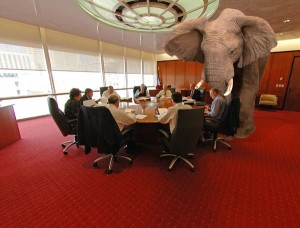 The more I search for information about agency structures and models, the less of it I seem to find, not only are there very few descriptions of the traditional agency structure, how planning, creative and client service work together, but there is even less information about how these models are evolving and what might be the models for the future.
The more I search for information about agency structures and models, the less of it I seem to find, not only are there very few descriptions of the traditional agency structure, how planning, creative and client service work together, but there is even less information about how these models are evolving and what might be the models for the future.
It is not like this is a new topic, very few are the people in the agency business who have not heard, or talked, about the transformation of Goodby, Silverstein and Partners in the US and winning digital agency of the year in 2006 – this is the case study for an agency that has reinvented itself to meet the changing needs of the market, even if commentators state that the transformation took up to 3 years and involved a renewal of about 70% of staff – but even with this there is little work on whether project management should become a core discipline or whether large creative teams are more efficient than the art director copywriter duo.
Academically speaking, organisational development is a major topic in terms of how corporations are structured, how teams work best together both physically and virtually and even how the offices should be laid out (see my post on designing spaces for creativity). But with all this information there is surprisingly little analysis of the agency business and how it does, or doesn’t, work. Could this be in itself one of the major issues in our development? If we haven’t been open and transparent enough about how we work, then nobody outside the industry has taken an interest and delivered any real thinking on the subject. There is a good chance that this is the case; for many years the advertising business has benefitted from what economists call information asymmetry where the complexities of making a TV spot or putting together a print ad were hidden from the clients to maintain margins, but in today’s digital society the playing field has been levelled with many clients creating internal agencies and having access to desktop publishing software that makes them almost as capable as an agency to deliver work. So the agency business has not benefited from any insight and therefore has not been able to have an objective view of itself, until now.
This lack of knowledge is becoming critical today, not only for the Madison Avenue guys who need to adapt to the changing media landscape (the traditional agency is looking to evolve), but also for those agencies that swallow up either marketing services or digital subsidiaries and attempt to integrate them into their existing operations. Two examples of agencies that have evolved and come out on the other side as a success are Goodby, Silverstein & Partners (as mentioned above) and also BBDO who in 2004 completely overhauled their creative department.
On the digital and traditional front, agencies that have succeeded in melding different parts of the business together appear to be those that have decided to create one new entity with both practices rather than attempting to run them in parallel. Leo Burnett and Arc digital in London have integrated their teams on certain clients to give true 360 teams and Modernista in Boston dissolved their interactive group to place the thinking ‘at the heart of the agency’s offering‘.
The key in these succesful cases seems to be mapping these new skillsets onto the existing agency structure – regardless of who is bigger than the other – and this mainly because we have found that those in new media are far more able to adapt and understand new structures than those in traditional agencies. So this means that we have to determine the role of strategic planning vs the account executive (a critical piece in the new agency era) and also where creative stops and production starts which is not quite as cut and dry as you enter the digital realm. There is also potentially less of the big idea and more of the big execution (but again, this is a topic for another time). These new structures need to think about how traffic can map onto project management and what role this should have in the overall agency as well as the technical input that is far more critical in digital media than in traditional print production. Finally relationships with media agencies need to be looked at more closely to find where the business models start to overlap and how we can work more closely – it seems unlikely that we’ll see media reintegrated to the creative agency in the near future.
In the absence of any real solid information on the topics of agency structure, I have come across two interesting sources for the future:
1) Boulder Digital Works at the university of Colorado is the up and coming training programme for anyone managing work in an agency and particularly digital – I will be attending their next session in early December and will provide more insight then.
2) I also came across this blog www.agencyfuture.com by a writer travelling the world to understand the evolving agency model – finally a coherent piece of reference content that can start to give us some primary research to work from.
These will both guide us as we move into the uncharted waters of the new agency model, but my beleif is that it will revolve around two guiding principles, on the one hand greater access to strategic resources and value on the front end, and on the other a more optimised and streamlined process on the back end for production and delivery.
Watch this space.

